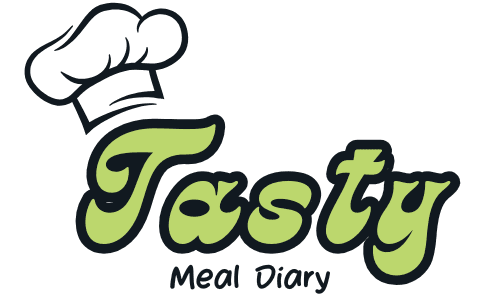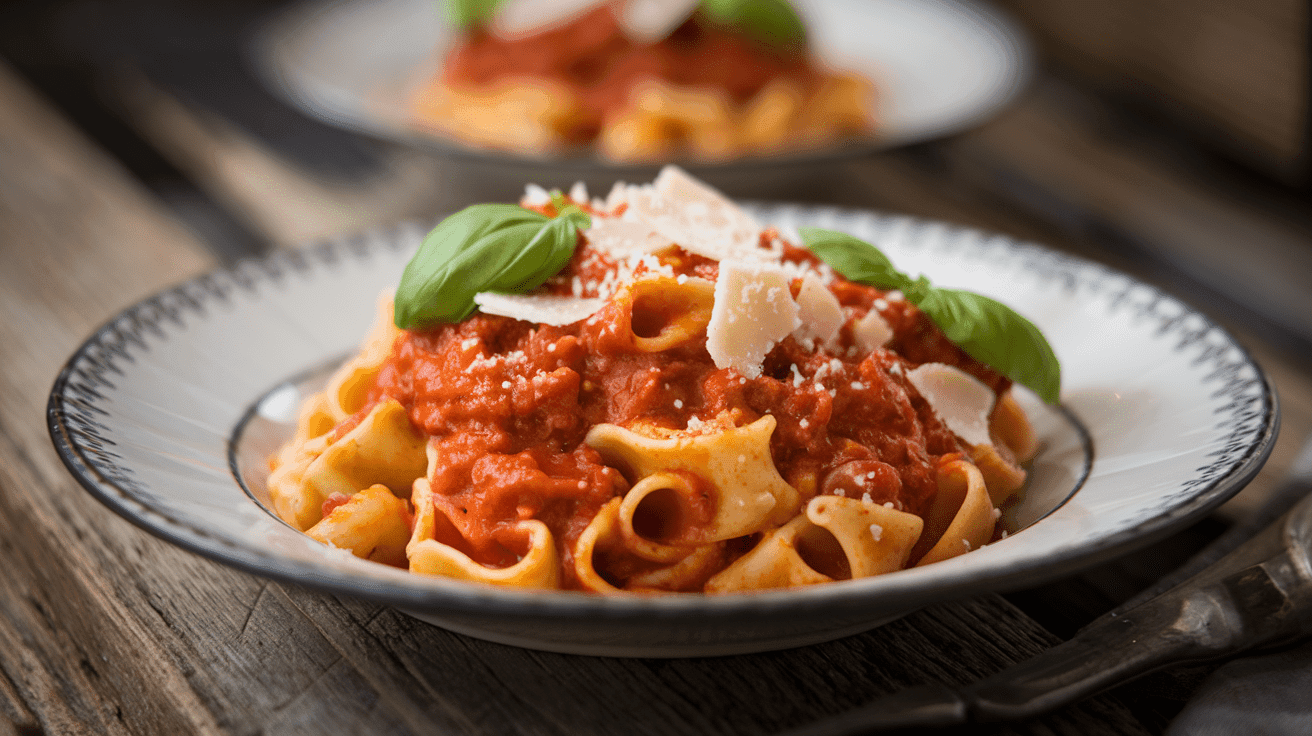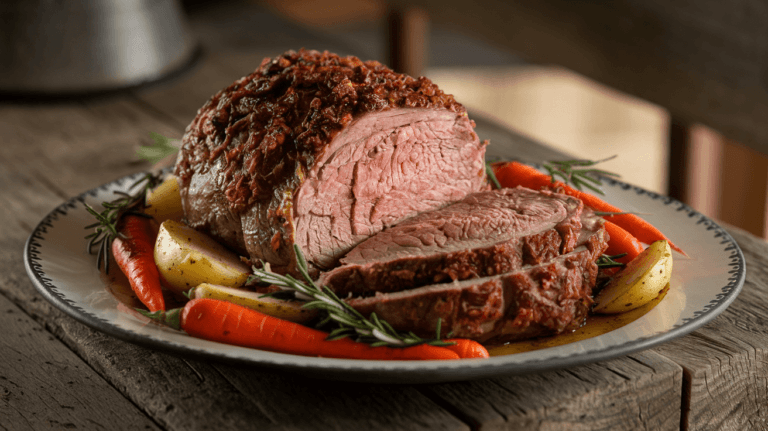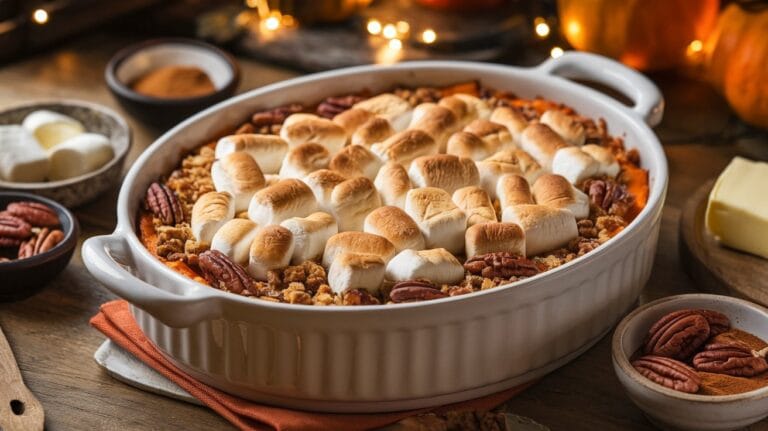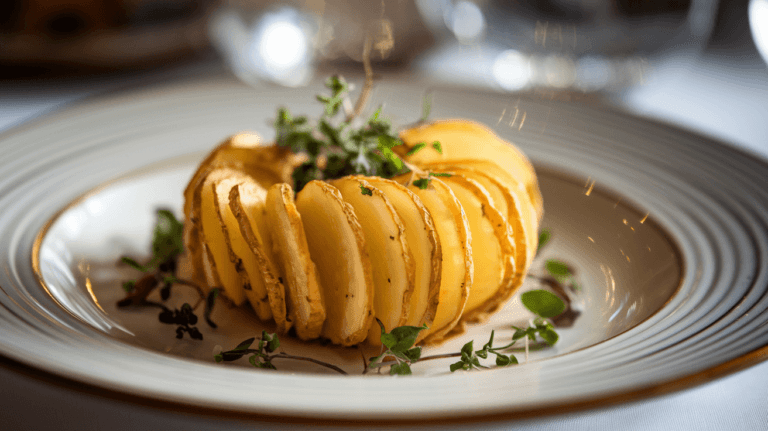Gluten-Free Pasta Recipe has taken the culinary world by storm, offering a delicious alternative for those with celiac disease, gluten intolerance, or simply a desire to switch things up. But with so many varieties out there rice pasta, chickpea pasta, lentil pasta, and more it can be tricky to know which one to choose. Let’s dive in! 🍝
Table of Contents
What is Gluten-Free Pasta?
Gluten-free pasta is a wheat-free alternative made from ingredients like rice, corn, quinoa, lentils, chickpeas, and even konjac. Unlike traditional pasta, which contains gluten a protein that gives pasta its chewy texture these alternatives rely on other binding agents to hold their shape.
For individuals with celiac disease or gluten sensitivity, consuming gluten can trigger severe digestive issues. But even those without allergies are jumping on the gluten-free pasta trend for its unique flavors and health benefits.
👉 Did you know? Some gluten-free pastas pack more protein and fiber than regular pasta!
Types of Gluten-Free Pasta Available
Not all gluten-free pasta is created equal. Each type has its own taste, texture, and cooking quirks.
- Rice Pasta: Mild flavor, slightly chewy, great for stir-fries.
- Corn Pasta: Bright yellow color, firm texture, pairs well with tomato-based sauces.
- Legume-Based Pasta (Chickpea, Lentil, Pea): High in protein and fiber, slightly earthy taste, best for hearty dishes.
- Konjac Pasta (Miracle Noodles): Low-calorie, rubbery texture, best for Asian dishes.
- Almond Flour Pasta: Rich, nutty taste, used in gourmet options like gluten-free ravioli.
💡 Pro Tip: If you love traditional pasta’s chewy texture, opt for brown rice-based or legume-based pasta.
Nutritional Differences Between Gluten-Free and Regular Pasta
Is gluten-free pasta healthier? That depends! While it’s a fantastic option for those avoiding gluten, some brands add extra starches or gums to improve texture. Here’s how they compare:
| Type | Protein | Fiber | Carbs |
|---|---|---|---|
| Wheat Pasta | 7g | 3g | 43g |
| Chickpea Pasta | 11g | 5g | 34g |
| Rice Pasta | 4g | 0g | 45g |
As you can see, legume-based pastas like chickpea or lentil pasta are higher in protein and fiber, making them a great choice for health-conscious eaters. Meanwhile, rice pasta tends to be lower in fiber and spikes blood sugar faster.
How to Cook Gluten-Free Pasta Perfectly
Cooking gluten-free pasta is a little different from regular pasta. If you don’t follow the right techniques, it can turn into a sticky, mushy mess. But don’t worry—we’ve got all the tips and tricks to help you cook it to perfection!
Common Cooking Mistakes to Avoid
❌ Overcooking: Many gluten-free pastas cook faster than regular pasta, so it’s easy to leave them in the pot too long.
❌ Not stirring enough: Gluten-free pasta can clump together if you don’t stir it frequently in the first 1-2 minutes.
❌ Skipping the rinse: Some gluten-free pastas (especially rice or corn-based ones) get sticky after cooking. A quick rinse under warm water can help!
Step-by-Step Guide to Cooking Gluten-Free Pasta
1. Use More Water Than Usual
Gluten-free pasta releases more starch, so you need extra water to prevent it from getting gummy. Aim for 6 quarts of water per pound of pasta.
2. Stir Immediately
The moment your pasta hits the boiling water, start stirring constantly for the first minute. This helps prevent clumping and sticking.
3. Watch the Cooking Time Carefully
Always follow the package instructions, but start taste-testing about 2 minutes before the suggested time. Some gluten-free pastas cook much faster than wheat pasta!
4. Drain and Rinse (If Needed)
While rinsing traditional pasta is a big no-no, gluten-free pasta sometimes benefits from a quick rinse—especially if it’s made from rice or corn. This helps remove excess starch and prevents it from getting sticky.
5. Toss with Oil or Sauce Immediately
Gluten-free pasta dries out quickly, so don’t let it sit! Toss it with a bit of olive oil or sauce as soon as you drain it.
The Best Recipes Using Gluten-Free Pasta

Classic Italian Recipes Made Gluten-Free
Gluten-Free Spaghetti Bolognese
🍝 Serves: 4 | ⏱ Time: 45 minutes
A hearty, comforting classic, this gluten-free spaghetti pairs perfectly with a rich and flavorful meat sauce.
Ingredients:
- 12 oz gluten-free spaghetti (brown rice or chickpea-based works best)
- 1 lb ground beef (or turkey for a leaner option)
- 1 small onion, finely chopped
- 2 cloves garlic, minced
- 1 can (14 oz) crushed tomatoes
- 1 tbsp tomato paste
- 1 tsp dried oregano
- ½ tsp salt and black pepper
- 2 tbsp olive oil
- Fresh basil and Parmesan for garnish
Instructions:
- Cook the gluten-free spaghetti according to package instructions. Drain and toss with a little olive oil.
- In a pan, heat olive oil over medium heat and sauté onion and garlic until fragrant.
- Add ground beef, breaking it up with a spoon. Cook until browned.
- Stir in tomato paste, crushed tomatoes, oregano, salt, and pepper. Simmer for 20 minutes.
- Serve sauce over pasta and garnish with fresh basil and Parmesan.
💡 Pro Tip: For extra depth, add a splash of red wine while simmering the sauce!
Creamy Gluten-Free Fettuccine Alfredo
🥄 Serves: 4 | ⏱ Time: 25 minutes
A creamy, cheesy delight, this gluten-free fettuccine will make you forget you’re eating wheat-free!
Ingredients:
- 12 oz gluten-free fettuccine (brown rice or corn-based works best)
- 2 tbsp butter
- 1 cup heavy cream (or dairy-free alternative)
- 1 cup grated Parmesan cheese
- 1 tsp garlic powder
- ½ tsp salt and black pepper
- Fresh parsley for garnish
Instructions:
- Cook gluten-free fettuccine until al dente. Drain and set aside.
- In a pan, melt butter over low heat. Stir in heavy cream and garlic powder.
- Add Parmesan cheese, stirring continuously until sauce thickens.
- Toss pasta into the sauce, coating evenly. Season with salt and pepper.
- Garnish with parsley and serve warm!
💡 Make it healthier: Use cashew cream instead of heavy cream for a dairy-free version!
Healthy and High-Protein Pasta Dishes
Chickpea Pasta Salad
🥗 Serves: 4 | ⏱ Time: 15 minutes
A light, nutritious meal, this high-protein gluten-free pasta salad is perfect for meal prep.
Ingredients:
- 10 oz chickpea pasta
- 1 cup cherry tomatoes, halved
- ½ cucumber, diced
- ½ cup feta cheese (optional)
- ¼ cup olive oil
- 2 tbsp lemon juice
- 1 tsp dried oregano
- Salt and pepper to taste
Instructions:
- Cook chickpea pasta and rinse under cold water.
- In a bowl, combine pasta, tomatoes, cucumber, and feta.
- Whisk together olive oil, lemon juice, oregano, salt, and pepper.
- Pour dressing over salad and toss well. Serve chilled!
👨🍳 Want more recipe ideas? Check out our chicken pasta recipes guide for more meal inspiration!
Gluten-Free Pasta FAQs
Still have questions about gluten-free pasta? Here are some common concerns and expert answers!
1. Does Gluten-Free Pasta Taste Different?
Yes! Gluten-free pasta has a slightly different texture and taste, depending on the ingredients.
- Brown rice pasta is closest to traditional pasta in texture.
- Chickpea and lentil pasta have a slightly nutty, earthy taste but are great for added protein.
- Corn pasta has a mild flavor but can be a bit chewier.
- Konjac noodles are more rubbery and absorb sauces differently.
💡 Best tip: Pair gluten-free pasta with flavorful sauces to mask any differences!
2. Is Gluten-Free Pasta Healthier Than Regular Pasta?
It depends!
- Legume-based pastas (chickpea, lentil) are higher in protein and fiber.
- Rice or corn-based pasta is lower in fiber but has a familiar texture.
- Some brands add starches and gums to improve texture, which can increase carbs.
💡 Health-conscious? Opt for high-protein pasta like chickpea or lentil!
3. What’s the Best Gluten-Free Pasta for Mac and Cheese?
For creamy mac and cheese, you’ll want pasta that holds its shape and absorbs sauce well.
Top picks:
✔ Brown rice pasta shells – classic, chewy, and mild-tasting.
✔ Chickpea elbow pasta – protein-packed and holds sauce well.
✔ Lentil fusilli – slightly firmer, great for thick cheese sauces.
💡 Avoid rice spaghetti it gets too soft in cheese sauce!
For more gluten-free meal inspiration, don’t miss our gluten-free pizza guide or explore these chicken pasta recipes for even more tasty ideas.
luten-Free Pasta Storage & Meal Prep Tips
Making gluten-free pasta ahead of time can save you time and effort during busy days. However, improper storage can lead to hard, mushy, or sticky pasta. Here’s how to store, reheat, and meal prep your pasta while keeping its taste and texture intact.
How to Store Cooked Gluten-Free Pasta
Unlike traditional pasta, gluten-free pasta tends to dry out or get gummy when stored improperly. Follow these best practices to keep it fresh:
✔ Toss with a little oil – This prevents sticking and helps retain moisture.
✔ Use an airtight container – Keeps air out and stops pasta from drying out.
✔ Store in the fridge (not the counter) – Gluten-free pasta should be refrigerated and used within 3 days.
✔ Keep sauce separate – If possible, store pasta and sauce separately to avoid a mushy texture.
💡 Pro Tip: If your pasta gets too dry, sprinkle a few drops of warm water over it before reheating!
Best Ways to Reheat Gluten-Free Pasta
Reheating gluten-free pasta the wrong way can lead to rubbery or clumpy noodles. Here’s how to warm it up properly:
1. Reheat on the Stovetop (Best Method)
✔ Heat a small pan over low heat.
✔ Add 1-2 tbsp of water or broth to loosen the pasta.
✔ Stir constantly for 2-3 minutes until evenly heated.
2. Microwave with Moisture
✔ Place pasta in a microwave-safe bowl.
✔ Add a splash of water or sauce to prevent drying.
✔ Cover with a damp paper towel and heat in 30-second bursts, stirring in between.
3. Boiling Water Quick Fix
✔ Bring a pot of water to a boil.
✔ Submerge the pasta for 30-60 seconds, then drain.
Best Sauces & Pairings for Gluten-Free Pasta
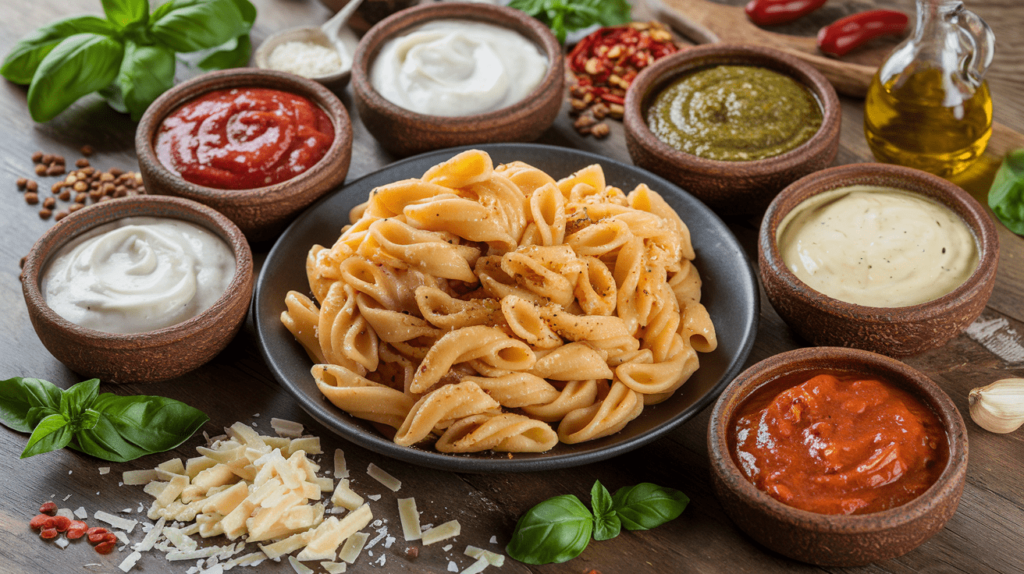
The right sauce can enhance the flavor of gluten-free pasta and improve its texture and mouthfeel. Some sauces stick better than others, so choosing the right one can make a big difference!
Best Sauces for Different Gluten-Free Pastas
1. Tomato-Based Sauces (Best for Rice & Corn Pasta)
These sauces cling well to slightly firmer gluten-free pasta types. Try:
✔ Classic Marinara – Works well with brown rice spaghetti.
✔ Arrabbiata (Spicy Tomato Sauce) – Pairs perfectly with corn pasta for a bold kick.
2. Creamy Sauces (Best for Legume-Based Pasta)
Legume pastas like chickpea or lentil pasta absorb creamy sauces beautifully. Try:
✔ Alfredo Sauce – Rich and creamy, perfect for chickpea fettuccine.
✔ Garlic Parmesan Sauce – Best for red lentil penne.
3. Light & Fresh Sauces (Best for Konjac & Almond Flour Pasta)
Lighter sauces help balance delicate pasta textures. Try:
✔ Pesto Sauce – Works well with konjac noodles for a fresh flavor.
✔ Lemon Garlic Butter – Great for almond flour pasta like ravioli.
Pairing Gluten-Free Pasta with Proteins & Veggies
The right proteins and veggies can elevate your dish and add extra nutrients.
Best Protein Pairings:
✔ Chicken or Turkey – Lean and mild, pairs well with creamy sauces.
✔ Shrimp – A great option for garlic butter pasta.
✔ Ground Beef – Best with tomato-based sauces for a hearty meal.
Best Vegetable Pairings:
✔ Spinach & Zucchini – Perfect for pesto pasta.
✔ Mushrooms & Peppers – Adds depth to red sauce dishes.
✔ Broccoli & Asparagus – Great in Alfredo and creamy pastas.
Best Vegan Gluten-Free Pasta Options
Many gluten-free pastas are naturally vegan, but some contain eggs or dairy (especially fresh pasta like gluten-free ravioli). Always check the label!
✔ Rice Pasta – 100% plant-based and works well in most dishes.
✔ Chickpea & Lentil Pasta – High in protein and fiber, great for balanced vegan meals.
✔ Konjac (Shirataki) Noodles – Zero-carb, but best with bold sauces to mask the rubbery texture.
Best Low-Carb & Keto-Friendly Gluten-Free Pasta
Traditional gluten-free pasta is often high in carbs, but there are low-carb alternatives perfect for a keto lifestyle.
✔ Miracle Noodles (Konjac-Based) – Almost zero carbs, but needs flavorful sauces.
✔ Zucchini Noodles (Zoodles) – A fresh, crunchy alternative to traditional pasta.
✔ Hearts of Palm Pasta – Mild, slightly firm texture, great for Alfredo dishes.
✔ Almond Flour Pasta – Lower in carbs than rice or corn pasta, often used for lasagna sheets.
If you’re looking for more tasty recipes, check out our collection of delicious meal ideas!
